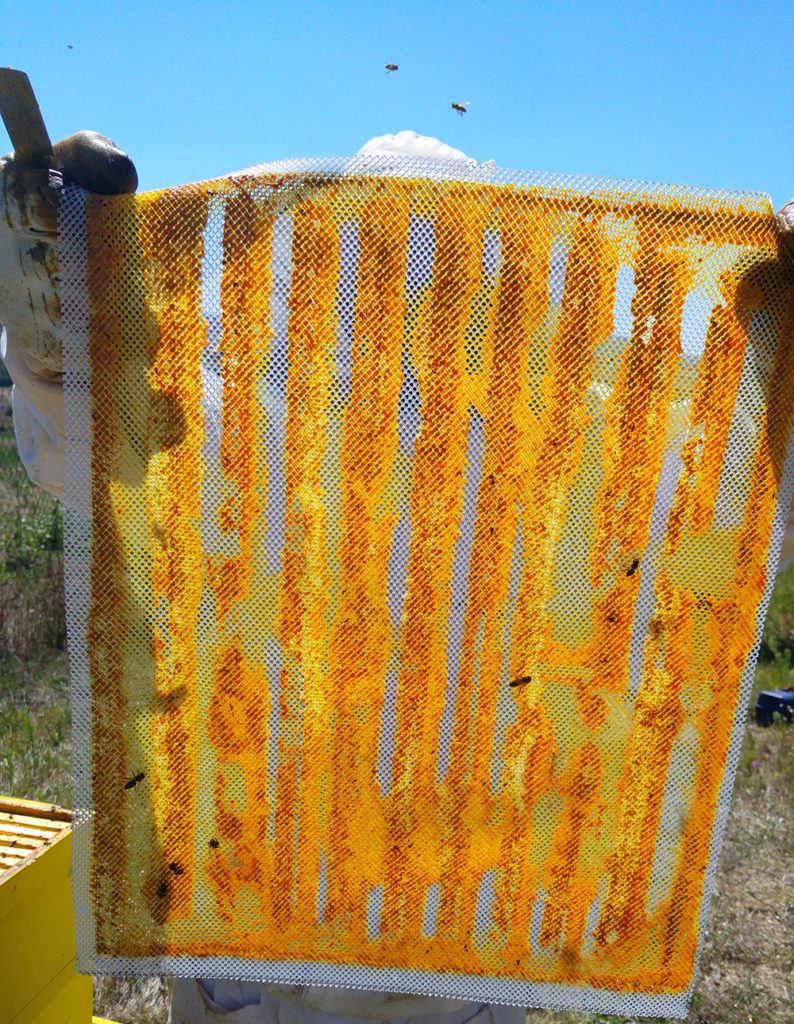
HOW TO GET BEESWAX (PROPOLIS)
Beeswax (Propolis) is a mixture of waxes, gums and gums, which some plants emit through their bark and buds, mixed with bee pollen, subjected to lactic acid fermentation in the digestive system of bees, which also adds enzymes to the beeswax. Propolis contains vitamins, essential oils, mineral salts, microelements, hormones and ferments. Bee clay is used by bees for disinfection activities and filling of cracks and small spaces, also for sealing holes that form a draft inside the hive.
The bees collect the resin from the plants and form it in the form of sticky balls that attach to their hind legs. In this way they transport the resin into the hive, where the other bees help them with unloading, crushing and its use.

Bee clay is one of the main products we produce. The period of harvesting of beeswax is during the flowering of meadows. It starts in early June and ends in mid-July, but bees manage to find it in nature and then until the end of August even September. Usually, we end up with harvesting in the middle of August to allow bees to prepare the winter hive and to bring the necessary amount of clay to stay inside the hive.
Due to the fact that bees can fill small spaces through which they can not pass, beekeepers set up bees / grates (so-called collectors) for bee barley, through which the bees can not pass and for this they try to fill the holes with clay. In this way, the bees fill their entire networks.
So the filled nets are sticky and the removal of clay from them is quite difficult. Bee bleached in warm weather becomes very sticky, in cold weather resembles a plasticine and in cold weather is brittle. That’s why we freeze the nets or just wait for the freezing time and temperatures to drop below -10 ° C when we crush the propolis from the nets.
The other option for clay extraction is by scraping away the clay from the walls of the hive, which is a laborious task, and the noise and the scraping of the bees do not appeal to the bees, which contributes to their irritation. Choosing the right time during grazing bees are busy collecting and processing nectar so it is easier to scrape off bees without penalizing it.
As a quality, the bees’ clay is the same in both methods, with a few exceptions to the one with the crushing, where the woody scratches from the hive can fall into the clay.
We use the bee barley mainly to make the so- called clay tincture as well as to make it in natural form in the form of clays

